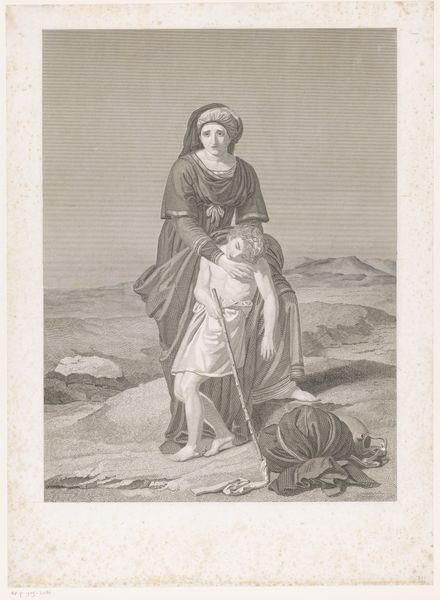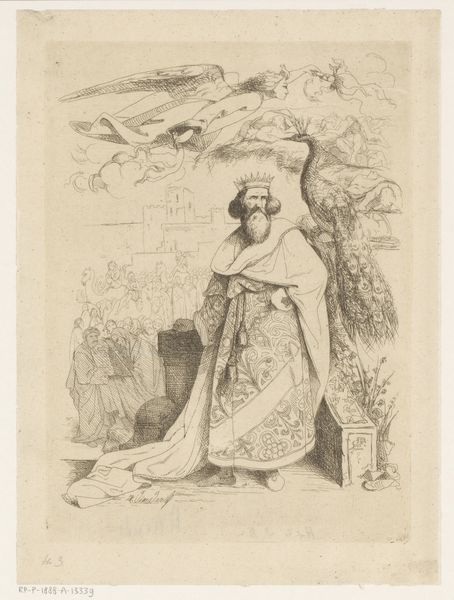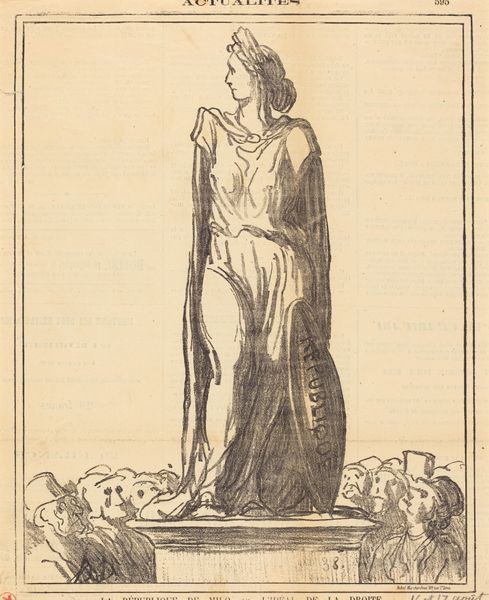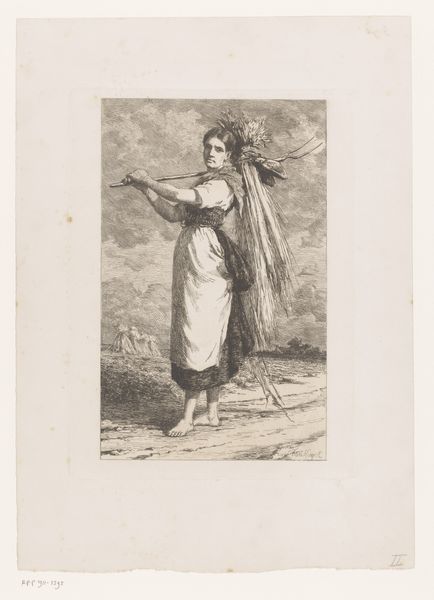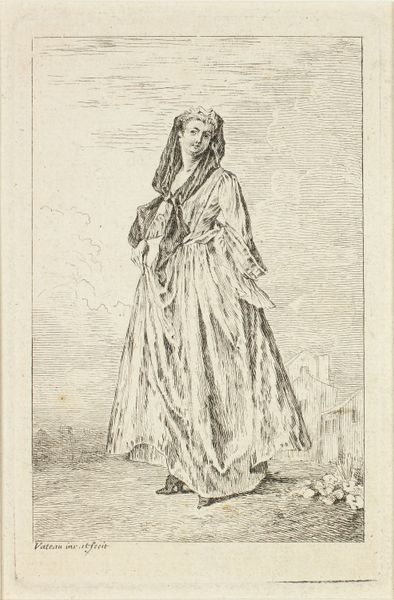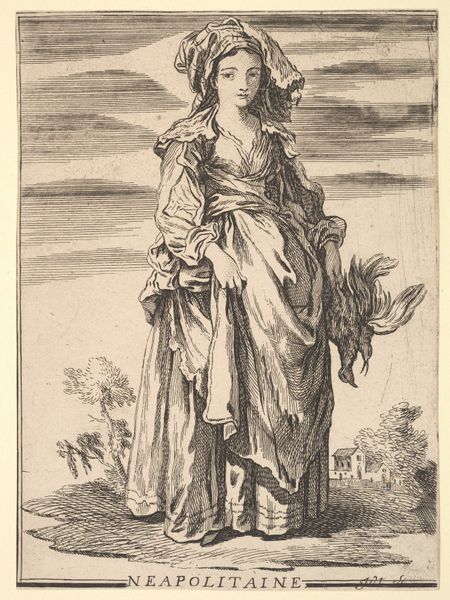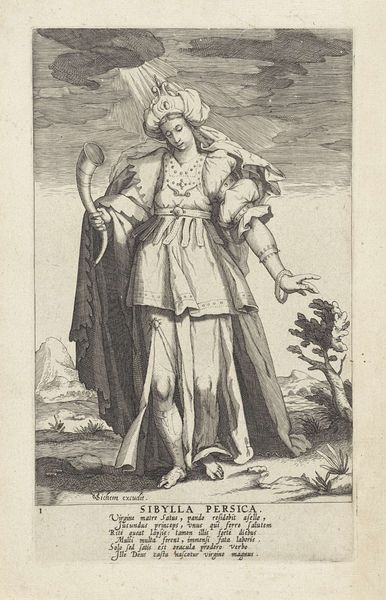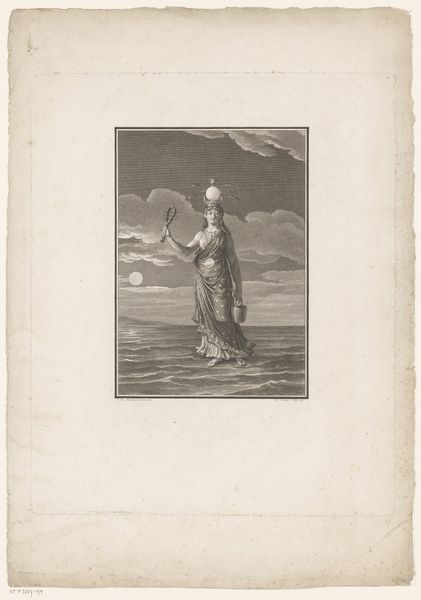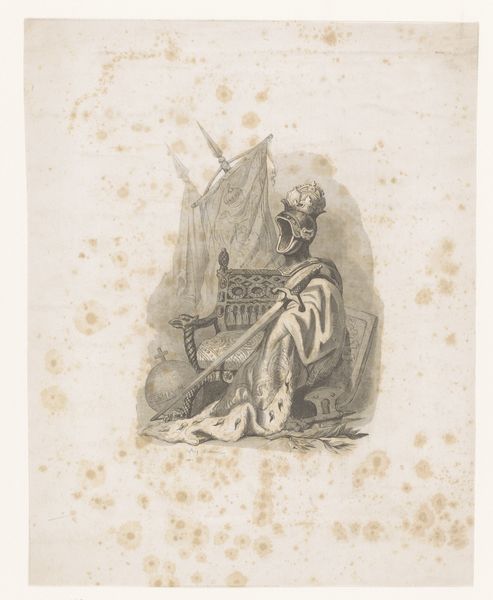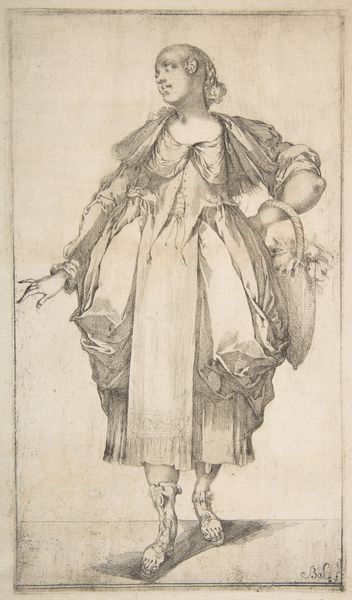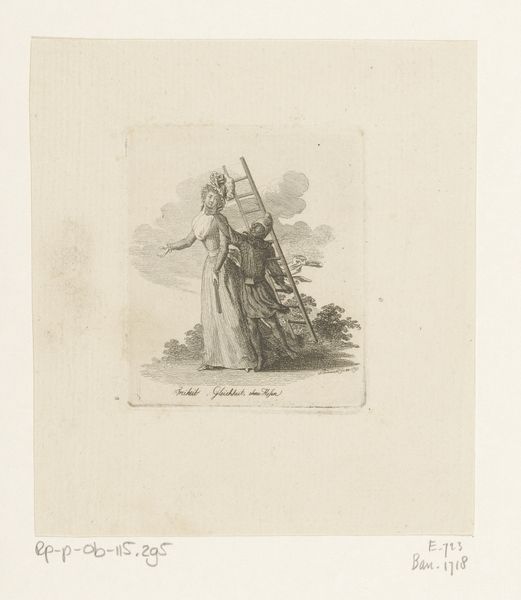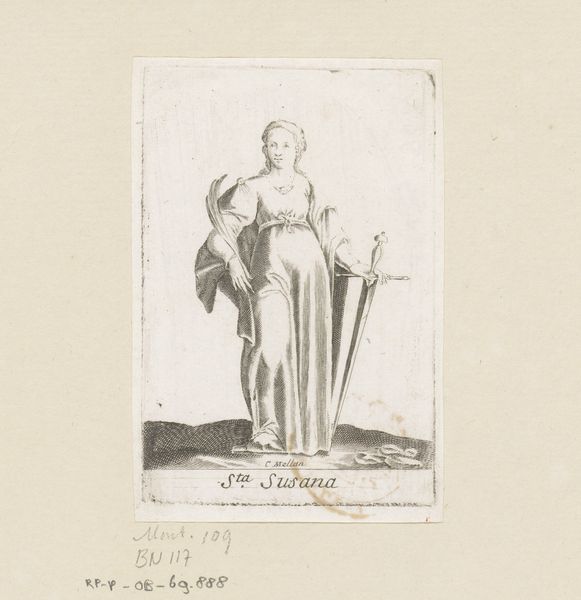
drawing, pencil
#
pencil drawn
#
drawing
#
narrative-art
#
pencil sketch
#
old engraving style
#
landscape
#
figuration
#
pencil drawing
#
romanticism
#
pencil
#
pencil work
#
history-painting
Dimensions: height 547 mm, width 398 mm
Copyright: Rijks Museum: Open Domain
Curator: Here we have a compelling pencil drawing, "Hagar and Ishmael in the Desert," dating roughly from 1815 to 1862. It portrays a well-known biblical scene, rendered in delicate strokes. Editor: The first thing that strikes me is the bleakness of the landscape. It really underscores the vulnerability of the figures. You can almost feel the harshness of the sun beating down. Curator: Absolutely. The landscape, very much in the Romantic tradition, amplifies the emotional weight of the narrative. This depiction, echoing historical accounts of suffering and divine intervention, held considerable appeal within religious and artistic circles of the time. How do you feel the artist employs materiality here? Editor: The medium itself speaks to scarcity and a sort of necessary frugality, doesn’t it? Pencil is so immediate, so portable, allowing for this intimate, almost journalistic capture of a very dramatic, almost unbearable moment. It's interesting to consider the artist's process of layering and crosshatching to create tonal depth in a monochrome work. The craft itself mimics the arid layering of the landscape and the complex depth of their crisis. Curator: That's insightful. Think of the intended audience; works like this offered a window into distant narratives, often reinforcing established societal norms regarding faith, motherhood, and even colonial perspectives on the ‘orient.’ Did the relative availability of such images shape broader understanding? Editor: No doubt. The reproduction and distribution of engravings based on drawings like this absolutely influenced popular understanding. You could argue that it’s not just art imitating life, but art *informing* life and social structures by presenting readily consumable versions of cultural stories and morals. I think a discussion on art's material production in its social context is essential here. Curator: I concur. I see the cultural impact, and I wonder if such renderings solidified certain attitudes toward religious stories as they played out on both the grand, sociopolitical scale and the individual scale, which touches more to your consideration about their emotional impacts. Editor: Agreed. What an interesting contrast, the grand sweep of socio-political implications alongside this very palpable human-scale drama sketched so simply in pencil. It asks what survives of our bodies, our stories, our labor in difficult situations. Curator: Indeed. A somber depiction that continues to encourage thoughtful reflection.
Comments
No comments
Be the first to comment and join the conversation on the ultimate creative platform.
